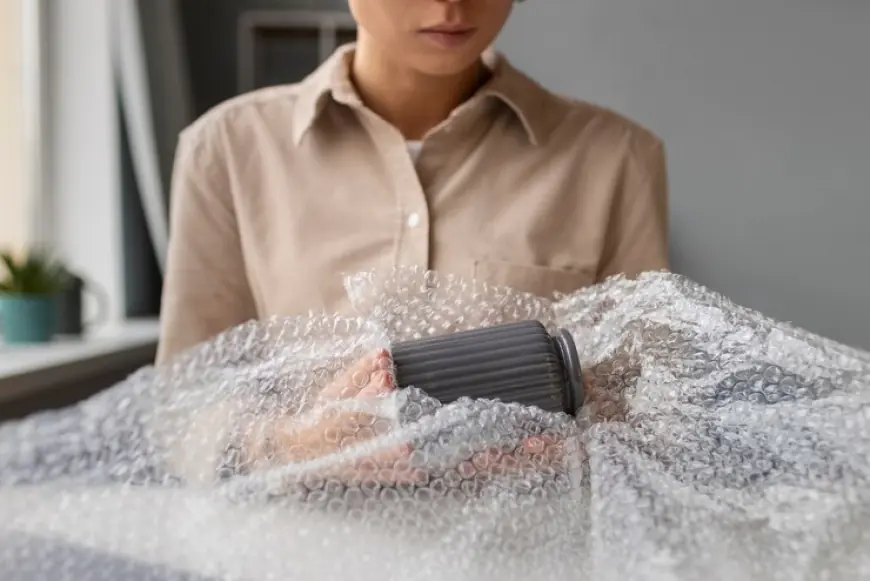How Bubble Wrap Evolved from Wallpaper to a Packaging Essential
Discover the fascinating history of bubble wrap! Learn how an experimental wallpaper idea turned into one of the most widely used packing materials today.

Bubble wrap is something we take for granted today—whether it's for protecting fragile items during shipping or just for the sheer satisfaction of popping those little air pockets. But did you know that this now-essential packaging material started out as an attempt to create a textured wallpaper?
Yes, bubble wrap wasn't initially meant for packing at all! Let’s dive into the unexpected history of bubble wrap and how it became a global shipping necessity.
The Birth of Bubble Wrap: A Wallpaper Gone Wrong
In 1957, two engineers, Alfred Fielding and Marc Chavannes, set out to create a unique, textured wallpaper. Their idea was to seal two plastic shower curtains together with air trapped in between, creating a three-dimensional, futuristic-looking wall covering.
The result? Instead of an appealing wallpaper, they ended up with a sheet of plastic filled with bubbles—something that looked more like packaging waste than home décor. While the idea didn’t take off as wallpaper, they quickly realized that the material had other potential uses.
Bubble Wrap’s Transition to Packaging Material
After their wallpaper experiment failed, Fielding and Chavannes didn’t give up. They saw potential in their invention and continued experimenting. In 1960, they founded Sealed Air Corporation, the company that still manufactures bubble wrap today.
Their breakthrough came when they discovered that bubble wrap was perfect for protecting fragile items. Around the same time, IBM had just released its first mass-produced computer, and the company needed a way to safely ship delicate electronic components.
IBM adopted bubble wrap as its primary packaging material, and from there, its popularity skyrocketed.
Why Bubble Wrap Became an Essential Packaging Material
So, what made bubble wrap such a game-changer in the world of packaging?
1. Superior Cushioning Protection
The air-filled bubbles act as tiny shock absorbers, protecting items from impact, vibrations, and drops during transit.
2. Lightweight Yet Durable
Unlike heavy padding materials, bubble wrap provides excellent protection without adding extra weight, making shipping more cost-effective.
3. Versatile and Flexible
It can be wrapped around items of various shapes and sizes, making it ideal for everything from electronics to glassware.
4. Fun and Satisfying to Use
Let’s be honest—popping bubble wrap is one of life’s simple pleasures! This unintended feature has made it popular beyond just packaging.
Modern Uses of Bubble Wrap Beyond Packaging
While bubble wrap remains a go-to packaging material, it has found other creative and practical applications, such as:
-
Stress Relief: Many people use it for relaxation and sensory stimulation.
-
Insulation: Some DIY enthusiasts use bubble wrap for window insulation to keep homes warm in winter.
-
Crafts and Art Projects: Artists and hobbyists incorporate bubble wrap into creative projects.
-
Agriculture: Some farmers use it to protect plants from extreme weather conditions.
Bubble Wrap: From Wallpaper Fail to Packaging Staple
What started as an unsuccessful wallpaper idea turned into a billion-dollar industry. Thanks to Alfred Fielding and Marc Chavannes’ persistence, bubble wrap revolutionized packaging and continues to be a vital part of the shipping industry.

 nbmpack
nbmpack 










